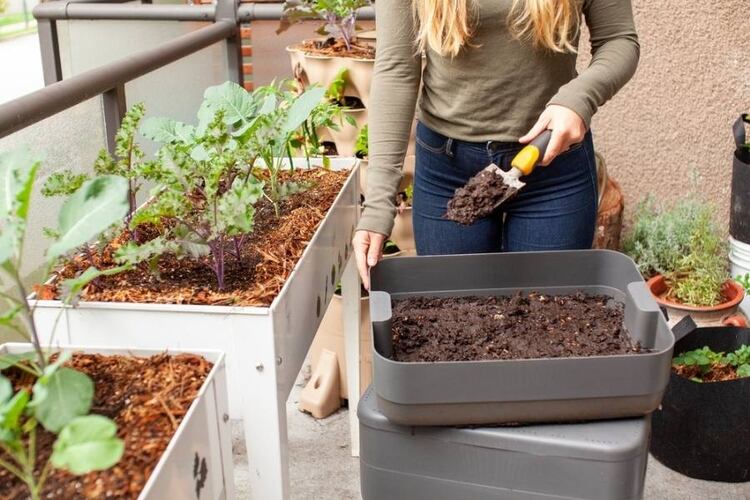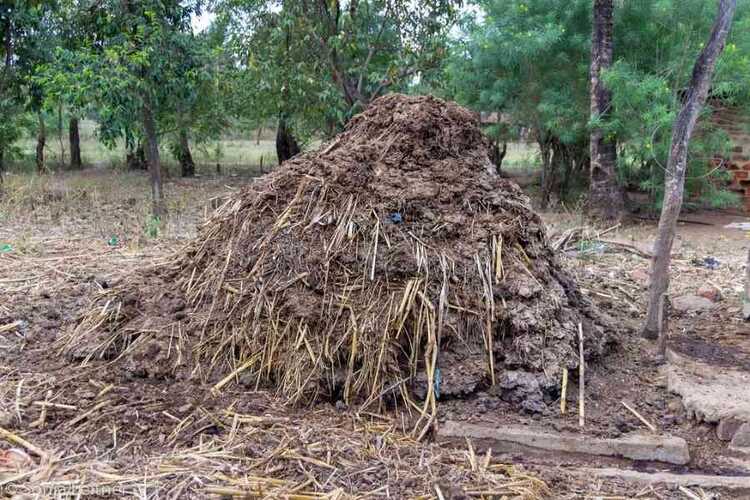What Is The Best Ratio Of Compost? (Perfect Ratio)

Organic fertilizers provide nutrients for plants, but they may not always provide all the necessary nutrients in the correct proportions. Yet, using them is not easy. What is the best ratio of compost to soil? There is no one perfect. Depending on the type of tree you are growing, the balance will vary.
Mixing fertilizers into the ground allows for better nutrient absorption by the plants compared to spreading them on top. You need to learn about the correct mixing ratio in the article below.
What Is The Best Ratio Of Compost To Garden Soil?
In general, the best ratio of compost to plant soil is 30:1, which means 30 parts carbon for 1 part nitrogen. However, let’s find out the proportions of organic fertilizer and ground corresponding to different plants below:
Raised Bed Garden
You should improve the ground to increase nutrients in raised garden beds. Make sure the finished fertilizer does not include weed seeds.
The most common mix is 30% finished compost and 60% potting soil. For the rest, you can add perlite or vermiculite. After the first growing season, you can add about 1 inch (2.5 cm) of nutrients to the top. Since the composting process will continue, you do not need to select the finished compost.
Potted Plants
Potted plants tend to drain and dry quickly. So, the best soil mix ratio will range from 20 to 50%. The higher the soil mix ratio, the lower the ground drying rate, and the longer it helps retain moisture.
If you use a clay pot, add more compost to the healthy soil. The reason is that this type of pot drains very quickly. Allow nutrients to settle into the disturbed soil for two weeks after tilling. Digging into loamy soil is not required.
Flower Gardens
The compost mixture for flower soil should have a ratio of about 30%. In it, you’ll mix one-part fertilizer with four parts dust. The maximum amount of compost to use in ground soil for flower beds is 30%. To increase nutrients, you can also apply ¼ to ½ inches of fertilizer over perennial flower beds.
Vegetable Beds
For ground soil used for growing vegetable gardens, the maximum rate of organic fertilizer is 30%.
If you’re mixing using a shovel, aim to add ⅕ inch of compost for every inch of soil as measured by the shovel. Measure the length of the shovel blade and calculate the appropriate proportions.
You can spread about an inch of the nutrient over the surface for those using a mixer. Then, mix it about five inches deep into the ground.
Lawns
When you add organic nutrients to your lawn, the microorganisms are nourished, making the soil more fertile. As a result, the grass is always greener, and the spread of weeds is limited.
A compost-to-ground ratio for new lawns is one to two inches of nutrients tilled evenly into the top six inches of soil. Then scratch the surface and sow the seeds. If you want to restore existing lawns, cover them with ⅛ to ¼ inch of nutrients. You can also lightly rake the ground before spreading it for the best results.
Trees And Shrubbery
For ground soil used for growing vegetable gardens, the maximum rate of organic fertilizer is 10%. You’ll need to mix one-part fertilizer with nine parts soil.
Perennial plants do not need too many nutrients to grow. You only need to top-dress from ¼ to ½ inch to the tree’s drip line, the area that the canopy covers.
Types Of Compost
There are several types of organic fertilizers that you can use to add nutrients to the soil. You can choose the most appropriate variety from the following.
Homemade Compost
People make this type of manure from garden and kitchen waste, – nitrogen and carbon. Making this organic fertilizer is relatively easy, you can compost even in an apartment. You’ll also benefit from composting the wormwood in the process.
Mushroom Compost
The composition of this fertilizer is the spent organic nutrients of the mushroom producers. This organic nutrient is a slow-release fertilizer. However, its nutritional effect is excellent.
Peat Moss
Peat moss is suitable for improving soil structure and moisture retention, but it is not specifically for acid-loving plants. The main components of the mulch are acidic leaves, such as oak leaves and pine needles. Before use, you should measure the pH to check and evaluate the concentration of the soil.
Composted Manure
Many people also use well-rotted manure from livestock waste, such as chickens, cows, and horses. It needs to be free of weeds and thoroughly rotted.
Green Manure
Last but not least, we make green manure by planting cover crops. Its primary purpose is to increase the humus content of the garden soil.
You will cut the plants and spread them on the top layer of the ground to let them decompose. Another way is to dig them deep into the ground.
How To Add Compost To Soil?
The first thing to notice is that your compost is wholly rotted and free of weeds. Mixing nutrients into the soil does not necessarily break down mycorrhizal fungi, but it is important to avoid disturbing the soil excessively to preserve the beneficial fungi.
However, this mixing method is quite suitable for sandy or clay soils. The reason is that it strengthens the ground structure to prevent disruption. If the texture of the ground is already solid, you can spread the fertilizer on the surface. Over time, rain, insects, and natural agents will mix them deep inside.
You can watch more videos below to understand the process and the tools needed to mix fertilizer into the ground.
Conclusion
What is the ideal compost-to-soil ratio? There is no one correct answer to this question, as each crop and ground will require a different balance. As you get more experienced in gardening, the blending will become gentler. You will derive the most suitable formula for your garden in the long run.
FAQs
Related post:




